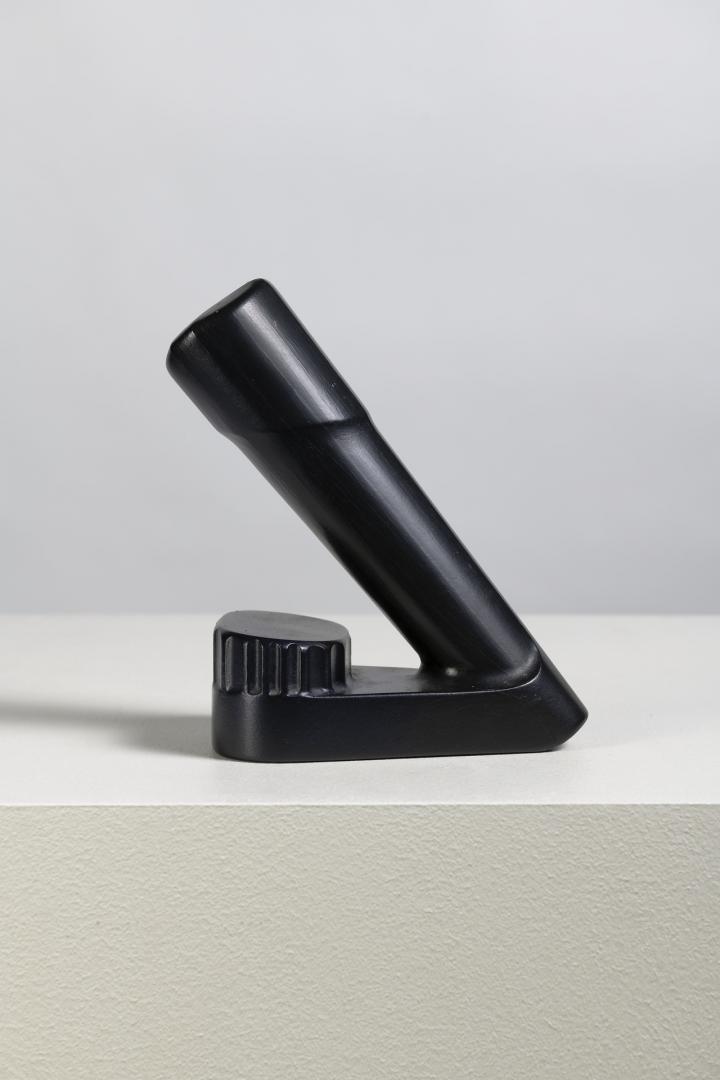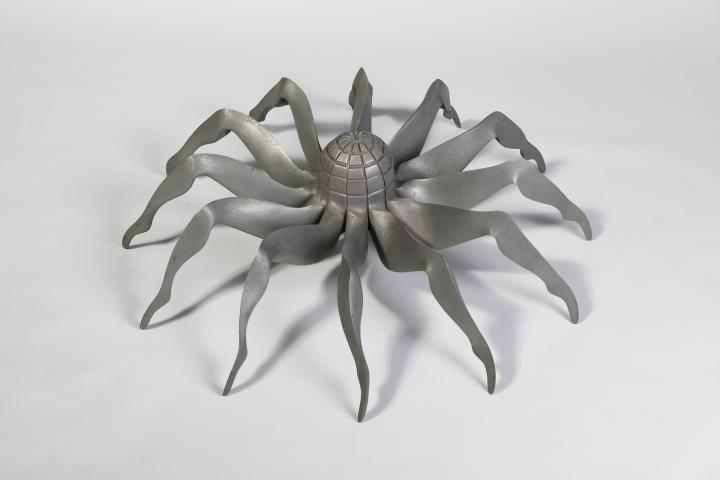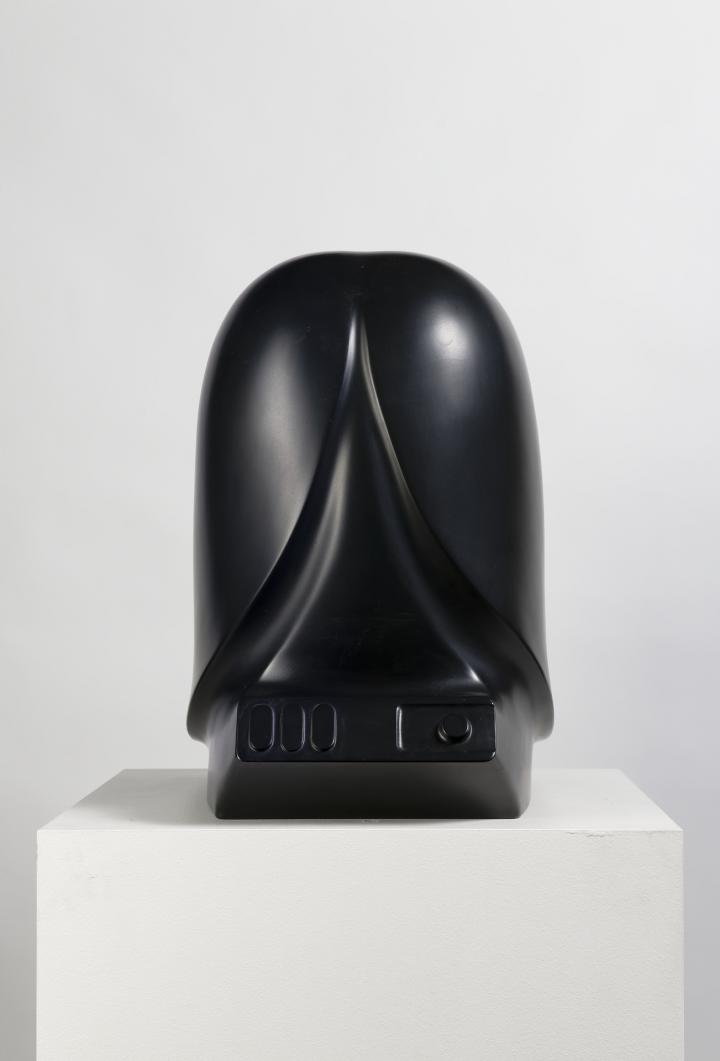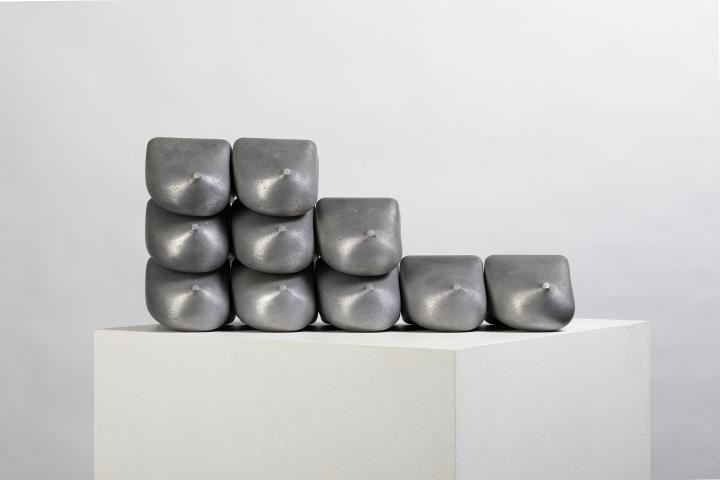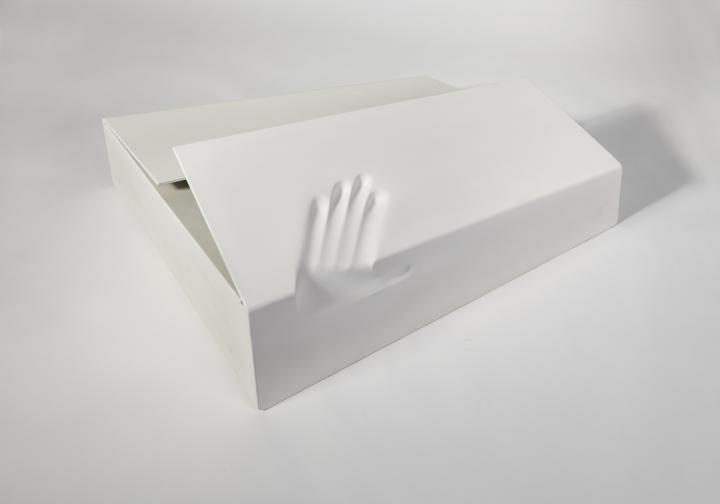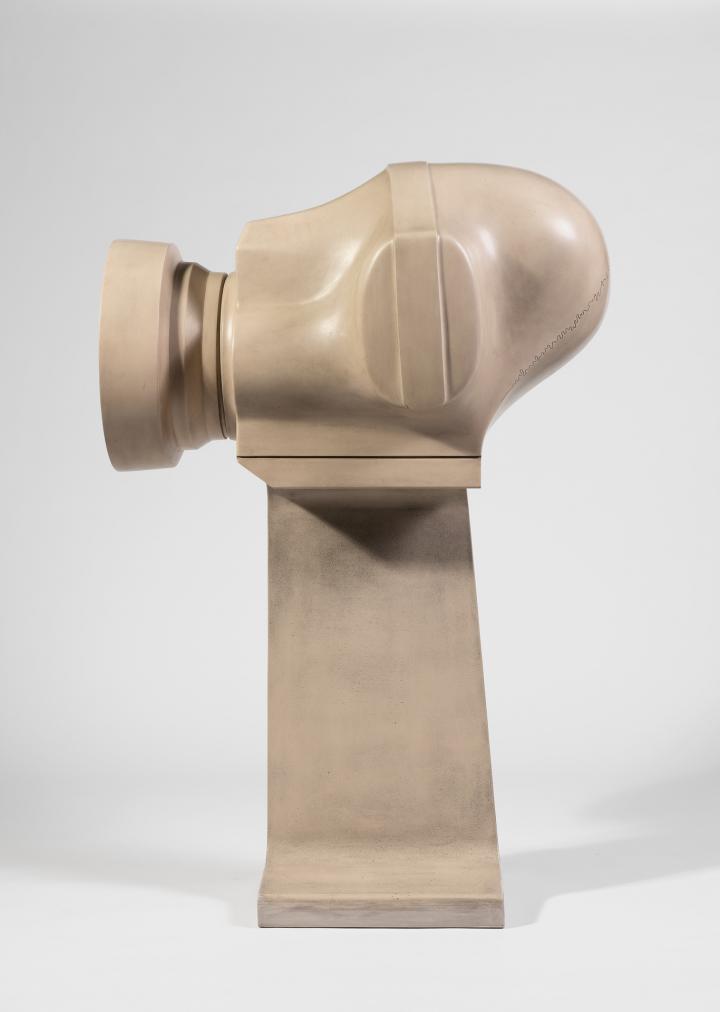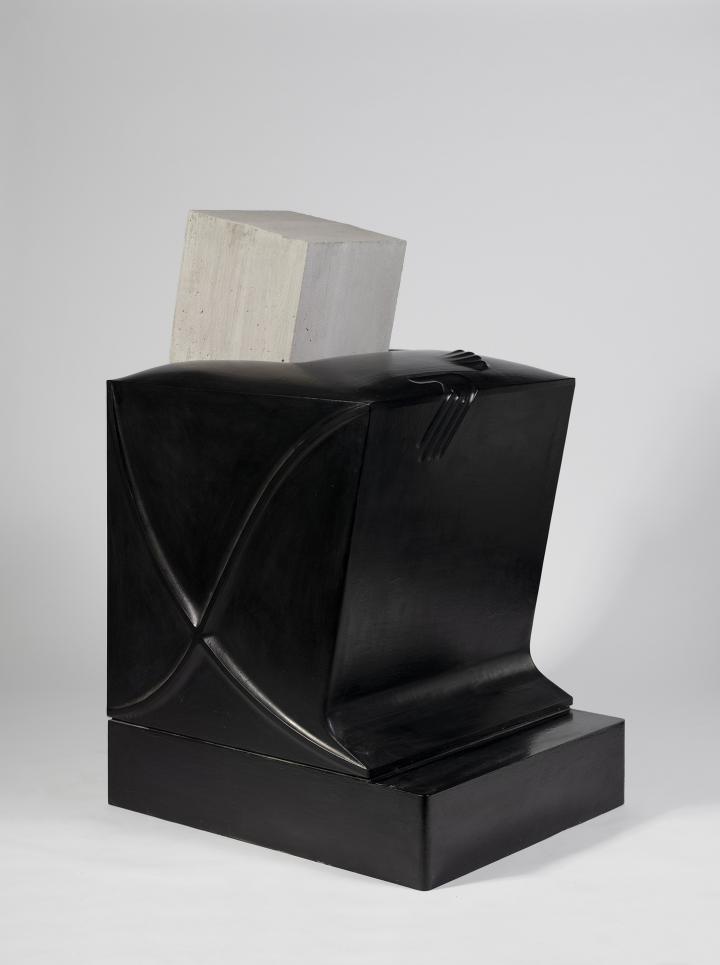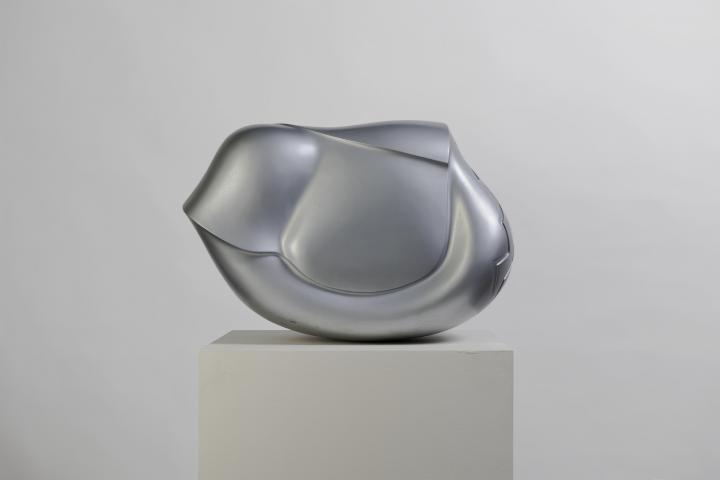Hans-Jürgen Lannoch
- Year of birth, place
- 1939, Marienwerder, Germany
- lives and works in
- Linkenheim-Hochstetten, Germany
- Role at the ZKM
- in the collection
- Biography
After studying mechanical engineering at the Technical University in Karlsruhe and economics at the Ruprecht Karls University in Heidelberg, he began his studies in product design at the Ulm School of Design, graduating in 1966. This was followed by a one-year research scholarship from the British Council at the Royal College of Art in London. After his return, he founded LANNOCH PRODUKTDESIGN as a partner with Helga Lannoch in Karlsruhe in 1967 and from 1977 also in Nice, France, where numerous design projects were created with well-known companies, some of which received design awards and were included in the collection of the Landesmuseum Baden-Württemberg. From 1970, Hans-Jürgen Lannoch taught industrial design for 16 years as a visiting professor at the Nationaal Hoger Instituut voor Bouwkunst en Stedebouw in Antwerp, now the Henry van de Velde-Instituut, in the newly founded and developing Faculty of Product Design, inspired by the design philosophy of the Ulm University of Art and Design. In Antwerp, the first thoughts on a design-theoretical and methodological approach emerged, which was called product semantics around ten years later. In 1996, Hans-Jürgen Lannoch was appointed professor at the Pforzheim University of Applied Sciences to make product semantics the basis for the study of industrial design and transportation design.
In 1966, the creative, artistic and theoretical collaboration with Helga Lannoch began in the form of a two-person collective that published and signed joint projects together. Hans-Jürgen Lannoch's joint stays at the Hochschule für Gestaltung Ulm during his studies and in London during his research fellowship at the Royal College of Art and the interaction with Helga Lannoch's Heidelberg sociology had a major influence on their development.
Comparable to the Bauhaus in Dessau, the Ulm School of Design was influential for an entire generation of designers in design, communication, industrialised construction and film in the 1950s and 60s. After Max Bill founded the university with concepts still derived from the Bauhaus, such as the joint one-year basic training programme, Tomás Maldonado developed a science-based design approach with Max Bense and others, which continues to influence many universities around the world today as "the Ulm model". Based on semiotics, which is predominantly located in linguistics, products were understood as sign carriers. In addition to the practical functions taken for granted, "form follows function", value-based cultural aspects could now also be introduced into the design process. It was assumed and hoped that, in addition to usability and aesthetics, a social responsibility, an ethical component could also become form-determining. There were already thoughts of renaming the product design programme at the Hochschule für Gestaltung to Environmental Design - it was the time of the so-called Club of Rome.
After Helga and Hans-Jürgen Lannoch had been running their design studio for several years, they asked themselves to what extent they could realise such hopes in practice. In 1971, the philosopher Wolfgang Fritz Haug had deciphered the dominance of the saleability of designed products that appear as commodities in his "Critique of Commodity Aesthetics", which consequently had to lead to an unleashed consumerism. In order to understand and illustrate the role that design actually played in this process, they opted for the artistic medium of sculpture, which they were familiar with as designers of artefacts. Art seemed to them to be a more suitable means of understanding complex interrelationships, in addition to the discussion in texts, such as in the trade journal "form", and so they created a group of works that they called "FOR SALE - Metamorphoses of Happiness". In the 1970s, the promise of happiness through the consumption of products was strongly linked to erotic-sexual desires and promises in advertising, especially through the seductive medium of television, which also reflected the gender roles of the time. In some of the sculptures, erotic formal elements and elements demonstrating male dominance therefore penetrate or overlay an apparently perfect objectivity. Plump testosterone in the sculpture "GTX", phallic power rising mightily from "Big Brother", kiss-ready female lips in "Supersanft", female breasts stacked like bars as the ideal commodity in "FOR SALE". Other sculptures refer to the increasing importance of the media dissemination of the message of happiness through the new communication media or, as in "Boomerang", to the increasing connection between microelectronic products and the human body. The fact that this attempt to decipher the contradictory nature of design had an impact was reflected not only in numerous publications but also in the fact that the exhibition of the "FOR SALE" group of works at the Karlsruhe Künstlerhaus on the occasion of the German Designers' Day in Karlsruhe in 1980 led to a scandal.
The examination of semiotics and the associated possibilities of making meaning effective in the design process alongside function has led some graduates of the Ulm School of Design on both sides of the Atlantic to consider, without knowing each other, how this could be achieved methodically in concrete terms. Product semantics ultimately emerged from these ideas. In the USA it was Klaus Krippendorff and Reinhard Butter, to whom the term "product semantics" is attributed, and in Europe Helga and Hans-Jürgen Lannoch and the Offenbach School of Design, as well as others, who introduced product semantics into the design discourse in publications and congresses as an extension of traditional modernist functionalism. Different approaches emerged as to how meaning could be integrated into the form-finding process, using metaphors, associations, schematic feature analyses, attribute lists, functional explanations, interpretations or analogies.
Helga and Hans-Jürgen Lannoch's "Semantic Transfer" contrasts the three-dimensional geometric spatial model, in which we are used to imagining objects, i.e. also designing them, with a six-dimensional linguistic spatial model. Languages have six categories of words that cover all possible properties and possibilities of spatial entities. These form the six dimensions of semantic space: quality - orientation - state - relation - possibility of action - evaluation. For example, an object is: hard - up - standing - heavy - rotatable - uncomfortable. All of these dimensions relate to how people perceive an object and therefore also to its significance for them. If they are taken into account in the design process, all aspects of the possible handling of the product can be addressed. The method of "semantic transfer" is used to transfer meanings from one medium to another, from language to space. For this purpose, colloquial words are selected that could play a role in the product to be designed from a human perspective. These are analysed for meaning in a "semantic analysis", whereby both practical and socio-cultural implications come into play and different interpretations in different languages and thus cultures can become effective. The German word scharf is hot in English, piquant in French and probably different again in Chinese or African languages, which can lead to very different interpretations and call into question the dominance of our cultural area. The actual semantic transfer then takes place through the creative transfer of linguistic ideas into spatial form and eludes a systematic approach in order to preserve its complexity. In this way, products can tend to emerge which, in their diversity of elements of meaning, make human interaction with them easier and more meaningful and at the same time incorporate cultural aspects, which goes far beyond operation or use.
The "semantic transfer" and many other strategies for integrating semantic aspects into design processes have led to very different effects on today's product world, and it can be assumed that they will continue to be used in the future with all kinds of intentions. At the simplest level, use is made more understandable for the user, which is still very close to the idea of "form follows function". In the competitive world of goods, however, it is often used to make products more desirable through their status. Helga and Hans-Jürgen Lannoch therefore pointed out a resulting dichotomy in an essay entitled "Product semantics between explanation and resistance" in 2011.
Hans-Jürgen Lannoch's teaching activities at the Pforzheim University of Art and Design allowed him to make the semantic space model developed by Helga Lannoch and himself the basis for studying industrial design and transportation design, alongside many elements of the design philosophy of the Ulm University of Applied Sciences. In the first semester, the semantic transfer method was used to design objects that were not intended to have any function, but each made a word from one of the six dimensions of the semantic space perceptible. The background to this was that these processes were intended to shift intuitive form-finding more and more from geometric to semantic concepts. These were then to be described linguistically in the explanations in order to develop a verbal repertoire. In the second semester, a low-complexity product was to be designed in which all features were to be described semantically in addition to their direct functionality. In the subsequent semesters, where industrial design and transportation design were separated, the semantic considerations were then to be implicitly incorporated into the design processes, on the assumption that the semantic spatial model would usefully complement the geometric spatial model in people's minds.

